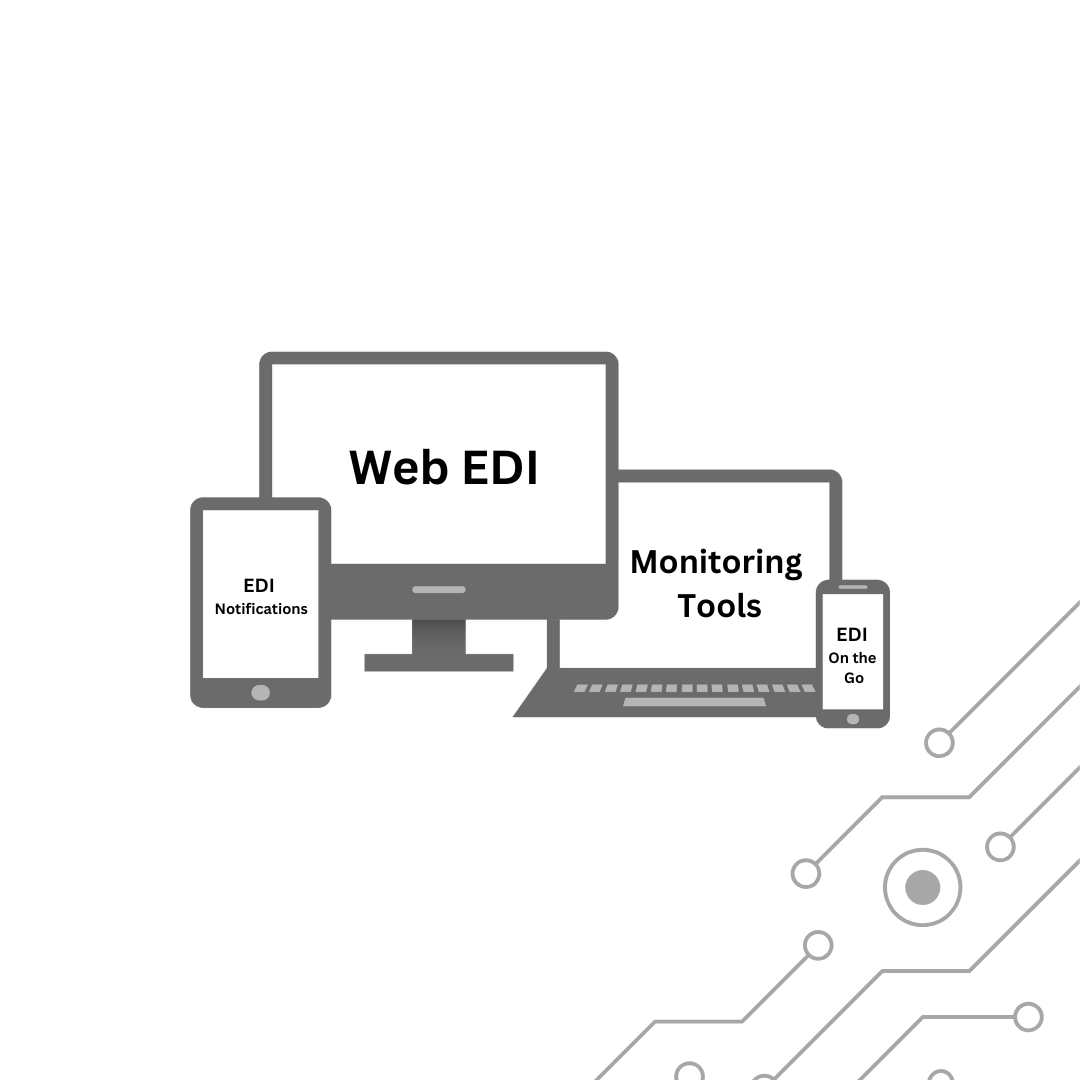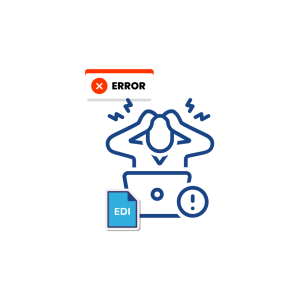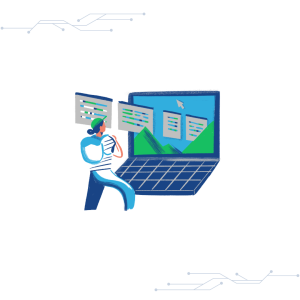Introduction
Definition of EDI
Electronic Data Interchange is the transfer of large amounts of information electronically in a specified format/standard between business partners.
Any type of business that deals with large amounts of identical paperwork/form data can directly benefit from adopting an EDI solution. The benefits of using a automated EDI system are clear:
- immense savings in time
- significant cost savings
- reduced drain on resources overall
- reduced error rates in data transfer (we almost want to say ‘eliminate’ here!)
- improved security of data being transferred
- reliability – you can have confidence that data is reaching its destination
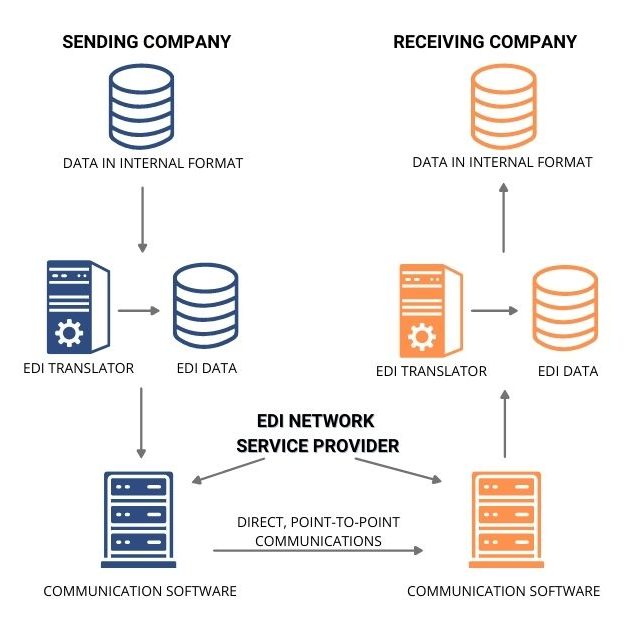
History of EDI
US Army Master Sargent named Edward Guilbert designed a standard manifest system that could transmit data by telex, radio-teletype, or telephone. This standard data transmission helped the US army track tons of cargo per day during the German war. Edward Guilbert is also called “The father of EDI.
Edward Guilbert left his military duty and joined Du Pont Co, where he continued his work in improving the standard manifest system and developed a standard electronic message for sending cargo information between Du Pont and a carrier company.
The first national EDI specification was published in 1975 and in the same year, the first Value added network (VAN) was also established by Telenet. Gulibert was a big contributor in developing the first national EDI specification.
In 1981, ANSIX12 published its first standard for the food, drug, warehouse, banking, and transportation industries. Soon, many major retailers and automobile companies mandated their suppliers to use EDI to do business with them
By the early 1990s, roughly 12,000+ companies in North America and Europe mandated their suppliers to start using EDI to exchange data electronically.
Today EDI has become an important part of business communication for most businesses across the world. Many different EDI standards have been designed to help industries from various verticals exchange data electronically with no delays and automate the data exchange process. With the development of cloud technology, EDI has become more accessible to many small and medium-sized businesses, where they can start exchanging EDI with any trading partner with just a laptop and internet connection.
How EDI Used Across Various Industries
The adoption of EDI has seen rapid growth in the last several years. Sectors such as Retail, Finance, Manufacturing, Healthcare, Pharmaceutical, Government, Utility & Construction, Logistics, and Foodservice have fully embraced and encouraged the use of EDI within their supplier networks.
Here is the list of EDI use cases in various industries,
Supply Chain (Retail, Manufacturing, Automotive)
- Purchasing
- Order fulfillment
- Shipping confirmations
- International orders
- Parts order fulfillments
Healthcare
- Exchanging patient health information
- Health insurance processing
- Prescription information exchanges
Logistics
- Scheduling shipments
- Tracking goods
Accounting
- Generating invoices
- Providing audit trails
Aviation
- Flight information exchanges
- Passenger name records (PNRs)
- International compliance and standardization

Different Types of EDI Solutions
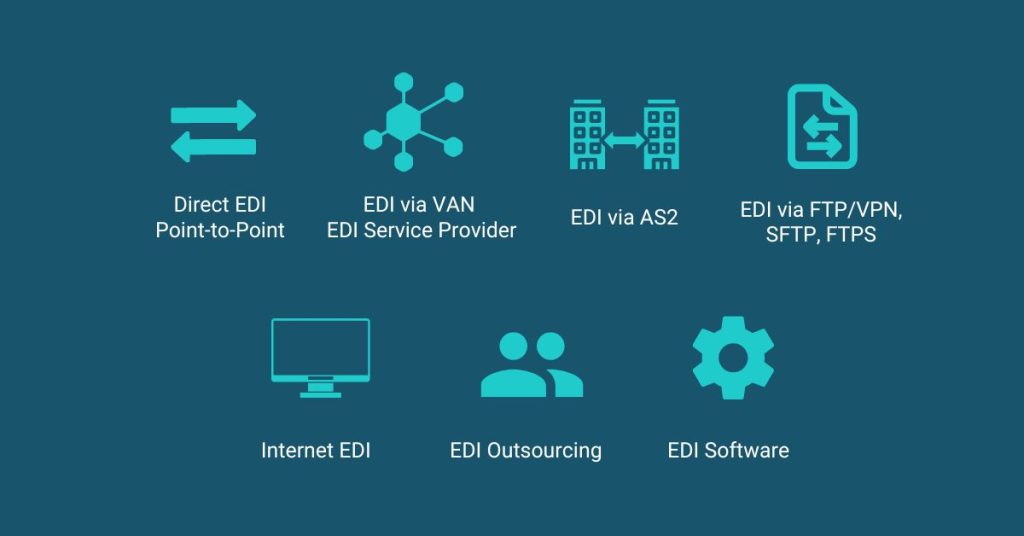
There are 8 Types of EDI solutions which include:
1. Integrated EDI Solution
An integrated EDI solution translates your inbound documents like purchase orders from your trading partners’ EDI files into a format that can be imported directly into your ERP, accounting, or another business system. The translation is fast and reliable so you can focus on your business
2. Internet EDI (Web EDI/Cloud EDI)
Communication of EDI messages via the Internet. Internet EDI is an economical solution that is easy to use. Even smaller or mid-sized vendors need to be compliant with their large retail customers. As a low-cost option, Internet EDI enables you to get up and running with very little. All you need is a computer/laptop and an internet connection to begin exchanging EDI documents.
3. EDI Outsourcing / Managed EDI services
EDI outsourcing is the process of having a third to manage a part or the entire process of using EDI to exchange data with trading partners
4. Direct EDI/Point-to-Point
Direct EDI, sometimes referred to as point-to-point EDI, establishes a single connection between two business partners. In this approach, a business would connect with each of its business partners individually.
5. EDI via AS2
AS2 stands for Applicability Statement 2. AS2 is one of the most popular methods for transporting EDI data securely and reliably
6. EDI via sFTP
sFTP stands for Secure File Transfer Protocol it provides organizations with a higher level of file transfer protection which allows businesses to securely transfer billing data, funds, and data recovery files
7. EDI via FTPS
FTPS stands for File Transfer Protocol Secure which is an extension to the commonly used File Transfer Protocol. In FTPS, FTP data travels through the network using either Secure Sockets Layer (SSL) or Transport Layer Security (TLS) protocols.
8. EDI VAN (EDI via Value Added Network)
The majority of EDI exchanged today occurs through EDI Value-Added Network (VAN). As long as two organizations are using the same VAN, communication is possible regardless of which EDI protocol is used to transfer information. Unlike Direct EDI this means organizations can manage one connection with the EDI VAN instead of separate lines of communication with each potential partner. Many businesses prefer this model to save them from the ongoing complexities of supporting the varying communication protocols required by different business partners.
Benefits of EDI
- Eliminate manual data entry errors
- Automating paper-based tasks frees up your staff for higher-value tasks and provides them the tools to be more productive
- Shortening order processing and delivery helps organizations reduce inventory
- EDI enhances transactional security
- Improve business relationships
- EDI promotes sustainability and reduces CO2 emissions by replacing paper-based processes with electronic alternatives
The Future of EDI
EDI will be the core document exchange capability to support innovations such as the
- Internet of Things (IoT),
- Blockchain technology
- Artificial intelligence
- Cloud technology
- Application program interface
1. Internet of Things (IOT)
IoT sensors are incorporated into a shipment’s packaging and tied to periodic EDI 214 messages to improve package condition visibility in near real-time.
2. Blockchain technology
Blockchain technology underpinning EDI information flows for shipments to offer a shared version of the truth that can quickly resolve and even avoid chargeback disputes.
Blockchain is a ledger-based technology that records changes relating to anything of value (e.g. goods or currency). Once created, each block is essentially a read-only record of a change. This created, blocks then can’t be tampered with. Thus system ensures data accuracy whilst enabling maximum visibility for all parties.
3. Artificial Intelligence
An AI agent that monitors all relevant events and information connected to a shipment and can identify a non-compliant event. AI agents can also determine if a reshipment is required, analyze the most efficient source of replacement, initiate a new shipment and accept an authorized return
4. Cloud Technology
Cloud technologies are another big trend in EDI, as many companies are adopting to cloud-based applications because of ease of access, use, and affordability. No need to install additional software and no prior EDI knowledge is required to use the cloud-based EDI system.
5. EDI and API
EDI and API Integration to support partners by adding APIs to your EDI setup which allows your business partners more opportunities to validate information through APIs, you can help them avoid common EDI transaction errors
Conclusion
Electronic Data Interchange (EDI) technology stands as a cornerstone in modern business communication, offering a transformative approach to data exchange. By providing a standardized and automated means of transmitting business documents, EDI enhances efficiency, reduces errors, and fosters seamless collaboration among trading partners.
As businesses continue to evolve, EDI technology remains a crucial tool for staying competitive, improving operational workflows, and navigating the complexities of a digitalized global economy.
Ready to find out more about Commport EDI Solutions?
Need Help? Download: EDI Buyers Guide
Unlock the full potential of your supply chain with our comprehensive EDI Buyer's Guide — your first step towards seamless, efficient, and error-free transactions
Frequently Asked Questions
EDI technology involves the use of computer systems and standardized protocols to electronically exchange business documents such as invoices, purchase orders, and shipping notices between trading partners.
EDI technology differs by automating data exchange. Unlike traditional paper-based processes, EDI enables the electronic transmission of documents in a standardized format, reducing manual errors and accelerating communication.
Yes, businesses of all sizes can benefit from adopting EDI technology. It offers scalability, allowing both small and large enterprises to streamline processes, improve accuracy, and enhance collaboration with trading partners.
The key components of EDI technology include data mapping, translation software, communication protocols, and standardized formats such as EDIFACT or ANSI X12. These components work together to ensure the accurate and standardized exchange of electronic documents.
EDI technology can be highly secure. It employs encryption, secure communication protocols, and compliance with industry standards to safeguard the transmission of sensitive business data, ensuring confidentiality and integrity.

